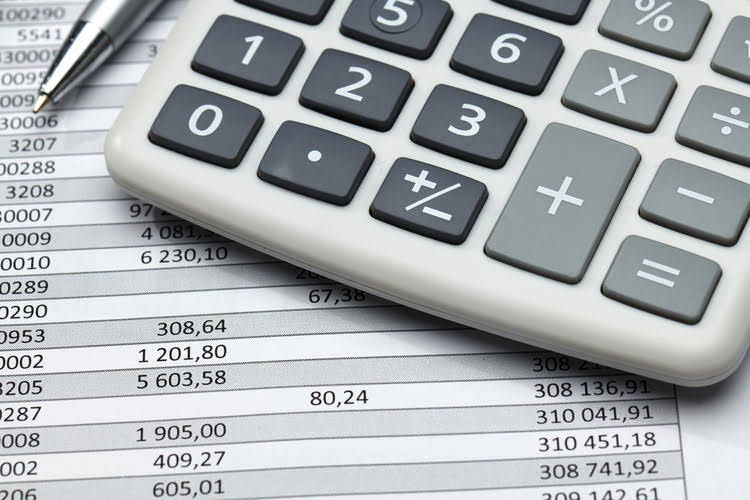Cost of Debt: Definition, Formula, Calculation & Example
Content
- Calculating the After-tax Cost of Debt
- Calculate Before-Tax Cost of Debt
- Cosdebt Debt Formula Calculator
- Cost of Debt and How it Impacts Taxes
- What Is the After-Tax Cost of Debt Formula?
- Take your business further with the experts in small business lending
- What Determines the Cost of Debt?
- How to calculate cost of debt
- Why this matters for your small business

Don’t waste hours of work finding and applying for loans you have no chance of getting — get matched based on your business & credit profile today. If you only want to know how much you’re paying in interest, use the simple formula. Instantly, compare your best financial options based on your unique business data.
Therefore, the cost of debt of a company reflects both its risk of default as well as the interest rates in the market. Additionally, it is also a component in calculating Weighted Average Cost of Capital (WACC). The cost of debt is the return provided to the debtholders and creditors of a company. These investors are given a return to compensate for the risk that comes with lending money. The Weighted Average Cost of Capital serves as the discount rate for calculating the value of a business. It is also used to evaluate investment opportunities, as WACC is considered to represent the firm’s opportunity cost of capital.
Calculating the After-tax Cost of Debt
Apply for financing, track your business cashflow, and more with a single lendio account. Every community college is different, and some may offer more scholarship opportunities than others. Scholarship applications for community college students may require a high school transcript, personal essay, letters of recommendation and more. The amount of money you can receive by filling out the FAFSA depends on your and your parent’s financial situation, the cost of attendance and other factors. The process of completing the FAFSA for community college is the same as completing it for a four-year institution. Then, you’ll click on the “Apply Now” link, which will take you to the FAFSA application.

Take the weighted average current yield to maturity of all outstanding debt then multiply it one minus the tax rate and you have the after-tax cost of debt to be used in the WACC formula. Debt is a vital component of a company’s capital structure in terms of using various funding sources to fund its operations and keep the business growing. Therefore, companies should understand how much they need to pay for debts to determine if they can pay all debt costs. Since interest on business loans can be tax-deductible, cost of debt is normally calculated after taxes are factored in. As a result, you also need to know your tax rate to calculate your cost of debt.
Calculate Before-Tax Cost of Debt
Avoiding financing can stall business growth and cause you to miss out on valuable opportunities for growth and expansion. Yet, if you overextend your business financially and its cost of debt grows too high, that can create problems of its own. Therefore, it is important to take the time to do some careful research before you seek financing and find the right balance that works for you.
- Don’t waste hours of work finding and applying for loans you have no chance of getting — get matched based on your business & credit profile today.
- Therefore, the cost of debt of a company reflects both its risk of default as well as the interest rates in the market.
- Lenders examine your business’s finances using financial documents, including a balance sheet.
- If the cost of debt will be more than 10%, the expense may not be worth it.
- It’s entirely possible to have 100% of your costs covered through financial aid.
If you’re just focusing on your loan’s monthly payment and not diving in deeper to analyze the true cost you’re paying, you might be spending more than necessary on your debt financing. A free Google Sheets DCF Model Template to calculate the free cash flows and present values and determine the market value of an investment and its ROI. As a result, debtholders will place covenants on the use of capital, such as adherence to certain financial metrics, which, if broken, allows the debtholders to call back their capital.
Cosdebt Debt Formula Calculator
To lower your interest rates, and ultimately your cost of debt, work on improving your credit score. Since observable interest rates play a big role in quantifying the cost of debt, it is relatively more straightforward to calculate the cost of debt than the cost of equity. Not only does the cost of debt reflect the default risk of a company, but it also reflects the level of interest rates in the market. In addition, it is an integral part of calculating a company’s Weighted Average Cost of Capital or WACC.

The cost of debt is the interest rate a borrower must pay on borrowed money, such as bonds or loans. A company’s total cost of debt is calculated by adding total interest expense and dividing it by total how to find cost of debt debt. The cost of debt is a critical measure because it directly impacts a company’s profitability and cash flow. A high debt cost also indicates a higher level of financial risk for a company.
Cost of Debt and How it Impacts Taxes
The YTM refers to the internal rate of return (IRR) of a bond, which is a more accurate approximation of the current, updated interest rate if the company tried to raise debt as of today. The Cost of Debt is the minimum rate of return that debt holders require to take on the burden of providing debt financing to a certain borrower. Even though you’re paying your friend $100 in interest, because of the $40 in savings, really you’re only paying an additional $60. The after-tax cost of debt is lower than the pre-tax cost of debt. Interest payments are tax deductible, which means that every extra dollar you pay in interest actually lowers your taxable income by a dollar. Because interest payments are deductible and can affect your tax situation, most people pay more attention to the after-tax cost of debt than the pre-tax one.
- Keep in mind that personal credit quality doesn’t matter as much with business loans.
- Hence, the cost of debt is crucial as it gives a chance to a company to save its tax.
- When neither the YTM nor the debt-rating approach works, the analyst can estimate a rating for the company.
- Because interest costs are tax deductible, there is a significant difference between the debt cost before and after taxes.
- Get a Cheaper Loan
A cheaper loan means to get a loan at a lower rate of interest which can be done by creating a good credit score by repaying loans on time, offering collaterals, negotiating, etc. - Get instant access to lessons taught by experienced private equity pros and bulge bracket investment bankers including financial statement modeling, DCF, M&A, LBO, Comps and Excel Modeling.
The measure can also give investors an idea of the company’s risk level compared to others because riskier companies generally have a higher cost of debt. Others may want to know your company’s cost of debt figures, because it can help them assess the risk of doing business with your company. Nominal is more common in practice, but it’s important to be aware of the difference. The critical difference between these sources of funding is the cost of capital is the required rate of return on shareholders’ investments.
Since tax rates vary for different businesses, for the sake of this exercise, let’s also just assume that your business is paying a 9% corporate tax rate. Cost of debt is the term that describes how companies repay the lenders and creditors from which they borrow money. Cost of debt is the effective interest rate a company pays to creditors—also known as debt holders or lenders. Unlike debt financing, equity financing is a financial instrument without a fixed rate of return. Investors buy stock in a firm with the hope that they will get dividends in the future as their investment will grow over time. Your cost of debt can tell you how taking out a loan or pursuing an investor will affect your company’s finances.
- You don’t have to claim this deduction as a business owner, but every little bit adds up.
- Businesses calculate their cost of debt to gain insight into how much of a burden their debts are putting on their business and whether or not it’s safe to take on any more.
- This rate will help us complete our next calculation — after-tax cost of debt.
- Debt and equity are two ways that businesses make money, but they are very different.



